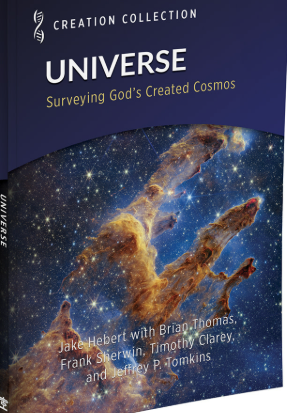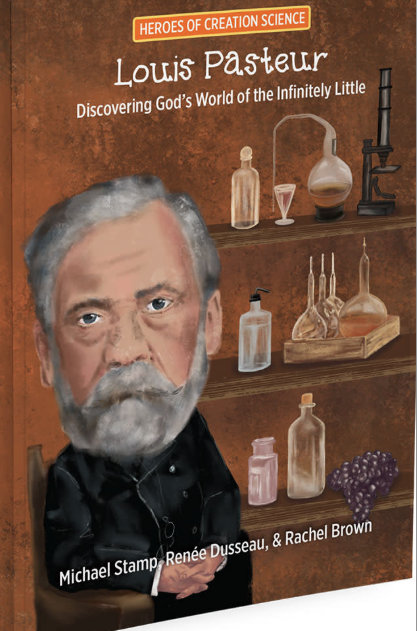Back in the days when television was new to North American society, there was a show called Perry Mason. This featured a lawyer who specialized in courtroom drama. In predictable fashion, Mr. Mason set out to defend an accused person, but the facts of the case looked very discouraging for the defendant. However, thanks to great sleuthing by Perry Mason’s two assistants, some important new details were discovered. In the courtroom, as the show drew toward a close, Mr. Mason triumphantly asked a witness, “Isn’t it true that ….?” And some new facts were revealed which changed the whole story. Everyone was all smiles when the defendant was exonerated. The point is that partial information can lead to wrong conclusions.
This situation reminds me of the practice of science. Many people think that mainline scientists are communicating truth based on their studies. However, on the origins’ issue, if the public were to consult other experts, for example creation scientists, the public might discover details which point to a totally different conclusion. In order not to be misled, you need to know the whole story.
And that reminds me of a recent controversy in science. You have probably heard the popular claim that the DNA of chimps and humans is 98.5% identical. With numbers that close, many experts claim that the two groups must be closely related, with humans having recently evolved from chimp ancestors.
Of course, ever since Darwin, many scientists have considered apes such as chimps to be indeed closely related to humans. With biochemical analysis becoming fancier in the 1950s, scientists began to compare human proteins with those of various apes. The scientists discovered that many human protein components of cells are chemically identical to those of chimps. The scientists then declared that humans are shockingly similar to these apes, perhaps only 1% different. But these proteins were only certain components of cells (involving a small part of the genetic information in humans or apes.) Later, with DNA sequencing a reality, scientists insisted that human and chimp genomes were 98.5% similar and this proved that humans came from these animals ancestors, because otherwise how could they be so similar? Creationists objected, but few of the public listened.
Fast forward to 2025. A huge (17 page article) on the analysis of complete DNA sequences (genomes) of six ape species was published in Nature (May 8, 2025 pp. 401-418). The data were extremely detailed and sophisticated and much more reliable than previous sequencing efforts. The scientists used advanced long-read DNA sequencing technology and fancy algorithms to connect the fragments of DNA in a logical way. Their studies produced end to end (telomere to telomere or T2T) readouts of the various ape chromosomes.
This seemed like the perfect occasion to compare human and chimp genomes (DNA sequences). Did the results still show a 98.5% identity as has for so long been proclaimed in museums and scientific publications? It turns out that nobody even looked!
The 17 page paper said nothing about this issue, nor did a promotional introductory article. Still, the information must have been there some place. And it was!! Buried in a 173 page Supplementary Information document online, accessible by a different URL link from the main article, on pages 33-36 and presented in two tables, inquirers discovered that the degree of similarity between human and chimp genomes was now measured at only 85.1 % similar instead of 98.5%. Moreover, the male sex chromosome of humans turns out to be only 10% similar to that of the chimp male chromosome.
Wow! While many of the cellular components of human cells and chimp cells are identical, there are huge sections of genome (involved in important processes like brain development and cell division) that are not at all the same. Did the authors of this article leave out this important comparison by mistake, or on purpose? Either way it does not look good. Did they have an agenda to protect evolutionary concepts?
Dr. Casey Luskin in Evolution News and Science Today sums up the whole issue (May 22, 2025) p. 5: “After the publication of this Nature paper, I {Dr. Luskin} don’t think it’s fair or meaningful to simply say that “most” of the human genome is only ~1 percent different without also acknowledging that 12.5 percent to 14 percent of the genomes are so different that they can’t even be aligned to make a comparison. The “1 percent“ statistic is far from the whole story. Indeed, citing it without the further context [of the May 2025 Nature paper] is a blatant misrepresentation. This reality needs to be acknowledged – always.”
Obviously, we don’t need numbers to tell us that humans are clearly exceptional and specially created, gifted with so many unique talents. But the numbers in this study do cast evolution into a very negative light.
This story therefore shows us that we need to be aware about the tendency of some people to hide information unfavourable to their pet theories. Don’t believe popular scientific declarations without first considering whether there is important information that you have missed. Bring on the sleuths!
Margaret Helder
July 2025
Subscribe to Dialogue






